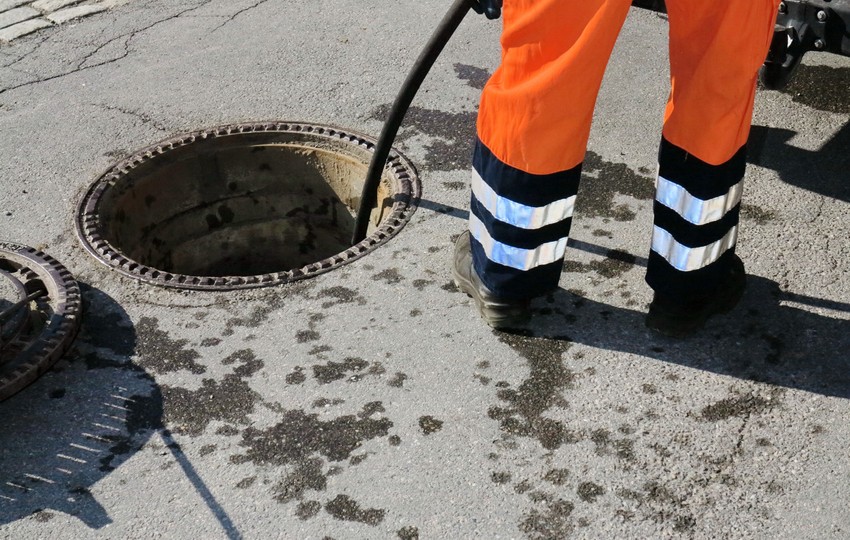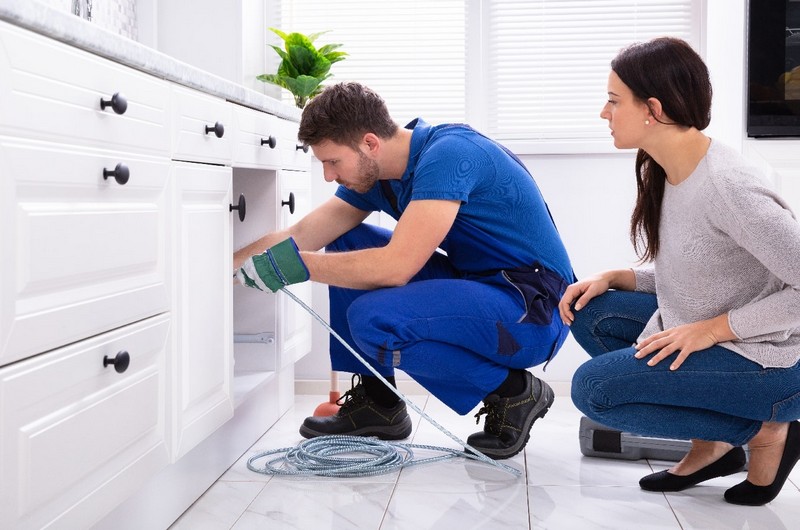 Expert Guide: Bathroom and Shower Leak Detection Methods
Expert Guide: Bathroom and Shower Leak Detection Methods

Leaky bathrooms are more than just a nuisance; they’re a silent destroyer, often leading to major damage before you even realise there’s an issue. That’s where Bathroom and shower leak detection methods come into play, offering not just peace of mind but also saving you from potential financial ruin. Diving into this read, you’re about to become savvy on pinpointing those first whispers of mischief lurking under wooden planks or cloaked behind walls, revealed by water marks and flaking paint.
We’ll dive deep into high-tech solutions that have changed the game in detecting leaks efficiently. Plus, understanding the role of professional plumbers can’t be understated—they bring expertise that’s crucial for both identifying problems and fixing them effectively. We’ve got everything under control, from handling insurance paperwork to implementing measures that prevent leaks down the line.
Identifying Signs of Hidden Leaks
Spotting a water leak early can save your bathroom from becoming an indoor pool. Keep an eye peeled for these subtle indicators that could spell trouble.
Mysterious puddles? Water stains on the ceiling below your bathroom shout ‘leak’. Don’t ignore them. Peeling paintwork and rotting flooring are like flashing neon signs saying, “Help needed here.” They’re often caused by moisture that shouldn’t be there.
Got wooden floorboards? If they start sounding more like a creaky old ship, you might have hidden areas soaking up unwanted water. The surrounding wall isn’t immune either; discolouration or mould spots whisper tales of leaks lurking behind shower enclosures or beneath bathtubs.
The Role of Your Water Meter in Leak Detection
To play detective with your plumbing, use your water meter. First step: make sure all water is off inside and outside the house. Then watch the meter. If it moves, congrats. You’ve got a leak somewhere.
This method won’t pinpoint where the culprit hides but narrows down the search area massively. Think about it as finding which room someone’s hiding in during hide-and-seek before starting to look under furniture.
Bathroom Floor Tells All
A suspiciously wet bathroom floor without any obvious spills could mean trouble underneath those tiles or vinyl flooring – especially if this happens regularly after showers even when careful not to splash around too much outside the shower tray or bath drain area.
Breaking the Mold: High-Tech Leak Detection Methods
Finding leaks in bathrooms and showers has evolved. It’s no longer just about guessing where water might be escaping from.
Now, we delve into the realm of advanced techniques, employing thermal imaging to uncover hidden leaks. This technology lets us see what’s invisible to the naked eye by detecting temperature differences caused by dampness or water flow behind walls or under floors. Think of it as giving your bathroom a high-tech health check-up.
But why bother with these fancy methods? Well, traditional detection techniques can be hit-and-miss and often involve a bit of demolition to get to the root of the problem. Not ideal.
Harnessing advanced leak detection technologies offers the exquisite advantage of pinpoint accuracy without the disruption typically associated with traditional methods. No need to tear down walls on a hunch anymore.
Detection isn’t just about finding current leaks either; it’s also predicting future issues before they turn into major headaches (or expensive repair bills). With tools like moisture meters alongside thermal cameras, professionals can pinpoint areas at risk and advise on preventative measures too.
This approach is not only smarter but more cost-effective in the long run. Leaks that go undetected can lead to serious damage over time – think mould growth, structural issues, even electrical hazards if left unchecked.
Dealing with a surprise bill for plumbing repairs really makes one understand the worth of having an advance alert mechanism in place. And while yes, these gadgets do make leak detection sound like something out of a spy movie, they’re very much real—and incredibly effective at keeping our homes safe and dry.
The Role of Professional Plumbers in Leak Detection
Spotting a leak can feel like finding a needle in a haystack. That’s where professional plumbers shine.
These tradespeople are not just your average Joe with a wrench. These expert plumbers come prepared, wielding a vast array of advanced gadgets and the wisdom gained from countless hours on the job. Think thermal imaging cameras that see through walls or acoustic detectors that listen for the whispers of hidden leaks.
Their expertise shines not only in mending current issues but also in averting potential calamities, making their skills crucial for more than just immediate repairs. From subtle signs like mould spots around shower enclosures to more obvious clues such as water puddles on bathroom floors, these pros know exactly where leaks originate and why.
But it’s not all about fancy gadgets. Understanding the layout of plumbing fixtures plays a big part in their detective work. Identifying whether it’s a waste pipe issue or if your vinyl flooring has given way due to prolonged exposure requires insight only seasoned professionals possess.
In cases where DIY methods fall short – think trying to fix enclosure leaks by simply tightening shower doors – calling in expert help saves both time and money long term. And let’s be honest, avoiding an expensive replacement project down the line is always good news for your wallet.
If you’re dealing with hard-to-find water leaks causing major damage behind tiles or under floorboards, trust me; you want someone who knows their stuff looking into it.
From Detection to Restoration: The Repair Process
The moment a leak is traced, time is of the essence. Acting swiftly could be the difference between a minor fix and a hefty bill for plumbing work.
Tradespeople come in, armed with experience and tools. They’re ready to assess what work’s needed to stop any more water mischief. Addressing leaks is only half the battle; proactive measures to thwart future ones are equally crucial.
A cost estimate gives clarity. No nasty surprises here, just clear figures so you know what you’re up against financially.
Plunging directly into the repairs, we tackle them with determination and focus. This isn’t a plaster-over-the-crack job but a thorough restoration aiming for long-term solutions.
Your bathroom won’t only be back to its original condition but better protected against future issues. Think of it as your bathroom getting an upgrade while we’re at it.
And because we understand how disruptive leaks can be, our tradespeople work efficiently and tidily, ensuring minimal disruption to your daily routine.
Once a leak is traced, the repair process can begin immediately
The initial detection sets off a swift chain reaction aimed at halting further damage ASAP. Time saved equals money saved in this game.
The tradespeople will assess the work needed to prevent further water damage and provide a cost estimate
An expert eye looks over every inch involved in the leak scenario—calculating both immediate fixes and preventative measures—all neatly summed up in an understandable quote that respects your budget concerns.
A comprehensive report will be provided, covering the repairs required to restore the bathroom to its original condition
You’ll get detailed insights on everything done—from minor tweaks like sealing gaps around shower doors or trays meeting walls right through major overhauls if necessary—complete transparency every step of the way.
Navigating Insurance Claims for Leak Repairs
Finding a leak in your bathroom can feel like discovering an unwanted treasure. Most hard-to-find bathroom and shower leaks, however, aren’t just nuisances; they’re potential claims waiting to be made against your building insurance policy. But where do you start?
First things first, get the experts in. Leak detection professionals don’t just find the source of the problem; they document everything. Having this paperwork is like striking gold when it’s time to hash things out with the insurance folks.
Why? Because detailed reports from these pros give insurers what they need to process your claim without fuss. They’ll map out how water puddles formed on your vinyl flooring or why mould spots are thriving where your shower tray meets tiled walls.
The Role of Your Insurance Company
Your insurer isn’t there to make life difficult. Actually, grasping their purpose simplifies everything significantly.
Once you submit a report detailing enclosure leaks or that pesky pipe issue under the bath drain, expect them to review it thoroughly. They’ll check against terms of coverage and might even send over an assessor for a closer look at damaged areas caused by prolonged exposure.
This step is crucial because it’s not about proving fault but establishing facts—the extent of damage and necessary repairs—so keep communication lines open and information flowing freely between all parties involved.
Preventative Measures Against Bathroom Leaks
Bathroom leaks are sneaky. Unnoticed, they slowly inflict harm, often before we’re even aware of their presence. Let’s tackle them head-on.
Regular Visual Inspection is Key
Catch those leaks early by keeping an eye out. Check shower doors and the surrounding areas for any signs of moisture or water puddles. Don’t forget to give a once-over to rubber seals; they’re often the first line of defence against water escaping your shower enclosure.
Water stains on wooden floorboards? Peeling paintwork? These could all be cries for help from your bathroom floor, whispering secrets about hidden leaks below.
Maintain Your Shower Enclosure Properly
Gaps where the tray meets walls are notorious for letting water escape into places it shouldn’t be. Make sure everything is sealed tight with no room for water to make a break for it.
If tiles cover your sanctuary, keep an eye on grout lines too. Over time, water can infiltrate through cracked tiles and worn-out grout, eventually causing the flooring to rot or damaging the panels hidden behind your walls.
The Devil’s in the Detail: Pipes and Drains
A plumbing leak might not always scream its presence until there’s major damage so getting familiar with your pipes and drains is wise. A quick check under sinks and around waste pipes can reveal early signs of trouble that need fixing before turning into expensive repair projects.
In essence, staying ahead involves regular checks, timely maintenance, and swift action at any sign of moisture where there shouldn’t be any—your home will thank you later.
Common Sources of Bathroom Leaks Explored
Bathroom leaks sneak up like a ninja, causing havoc where they strike. Let’s break them down.
Shower Leak Culprits
First off, shower leaks. These sneaky nuisances are famous for their ability to cause mischief without being noticed. The usual suspects? Shower doors not sealing right and the point where your shower tray meets the wall. If these areas aren’t watertight, you’re looking at potential water drama.
The sneaky part is that these leaks can start small but eventually lead to big problems like damaged walls or mould spots popping up in unexpected places.
Detecting Drain Disasters
Moving on to drain leaks – another common offender. Whether it’s your bath drain acting up or issues with the waste pipe from your sink, each presents its own brand of chaos.
A clear sign something’s amiss could be persistent puddles forming nowhere near any water source. Or worse yet, an unexplained musty odour signalling prolonged exposure to unwanted moisture.
Floor Fiascos and Bathtub Blunders
Catch those floor leaks early because they’re adept at hiding under vinyl flooring or between tiled floors until significant damage has been done.
Sometimes it’s cracked tiles giving away their position; other times it might be peeling paintwork along skirting boards whispering tales of dampness below.
Bathtub leaks often fly under the radar too.
A tiny gap where sealant should have been can let water escape every time you take a dip, slowly but surely making its way into surrounding structures leading to costly repairs if not checked.
DIY vs Professional Leak Detection
Facing a leak can feel like spotting the first domino in a line. Knock it over, and you might be staring down an expensive replacement project. But here’s the catch: deciding between DIY or calling in the pros isn’t always black and white.
On one hand, DIY leak detection offers immediate action. You grab your toolkit and start hunting for those constantly leaking culprits. It’s all about checking shower doors for gaps, inspecting pipes under the sink, or watching out for water puddles that shouldn’t be there. These indicators whisper of impending chaos lurking just out of sight.
However, while rolling up your sleeves is commendable, some leaks play hide-and-seek better than others. This is when it’s wise to call in the experts. Experts use sophisticated gear like thermal imaging to spot even hard-to-find water leaks without tearing apart your bathroom floor.
The choice boils down to this: if you’re facing obvious signs of leakage—think visible water stains or mould spots—give DIY a shot by following step-by-step guides. But when leaks turn into elusive foes hiding behind walls or under floors? That’s when dialling up experienced plumbers makes sense—they bring not just tools but years of chasing down similar gremlins to save both time and money before minor issues escalate.
Enhancing Bathroom Waterproofing Post-Leak
Caught a leak? Now’s the time to up your waterproofing game. Think of it as giving your bathroom an invisible shield.
First off, check shower doors and enclosures for any gaps or cracks. Water slipping through these hidden nooks can morph into major nuisances if not addressed promptly. A simple silicone sealant might just do the trick here.
Next on the list: that pesky waste pipe and where your shower tray meets walls or floors. As the days roll on, these connections may evolve into prime territories for water intrusion unless they’re meticulously safeguarded. Applying a fresh layer of waterproof sealant around these areas can prevent future mishaps.
Moving onto tiled floors and walls—cracked tiles are more than just an eyesore; they’re potential leak culprits. Replacing cracked tiles and reapplying grout where needed helps block moisture from seeping through.
Dry isn’t always better except when it comes to bathrooms. If you’ve got vinyl flooring, make sure its edges are fully sealed against walls or cabinetry to stop water in its tracks.
Last but certainly not least: regular visual inspections go a long way in keeping leaks at bay. Keep an eye out for mould spots or peeling paintwork—they’re like breadcrumbs leading you straight to moisture problems needing attention.
Bolstering bathroom waterproofing post-leak is about being proactive rather than reactive—a mantra worth adopting for peace of mind (and dry socks).
Conclusion
Leaky bathrooms spell trouble. Now that you’re equipped with the know-how, you stand ready to tackle what comes next. Bathroom and shower leak detection methods save not just your peace of mind but your wallet too.
Detect early, act swiftly. Ever recall the subtle murmurs tucked away behind walls and nestled beneath floorboards? Spot them before they shout destruction through water marks and flaking paint.
Lean into the digital age; it’s revolutionizing our ability to detect those sneaky water escapes that otherwise remain unnoticed. And never underestimate the power of a pro plumber—they fix what tech can only find.
Maintenance is key. Regular checks today prevent the floods of tomorrow.
You’ve got this—knowledge in hand, action at ready. Let’s stop leaks in their tracks together.



